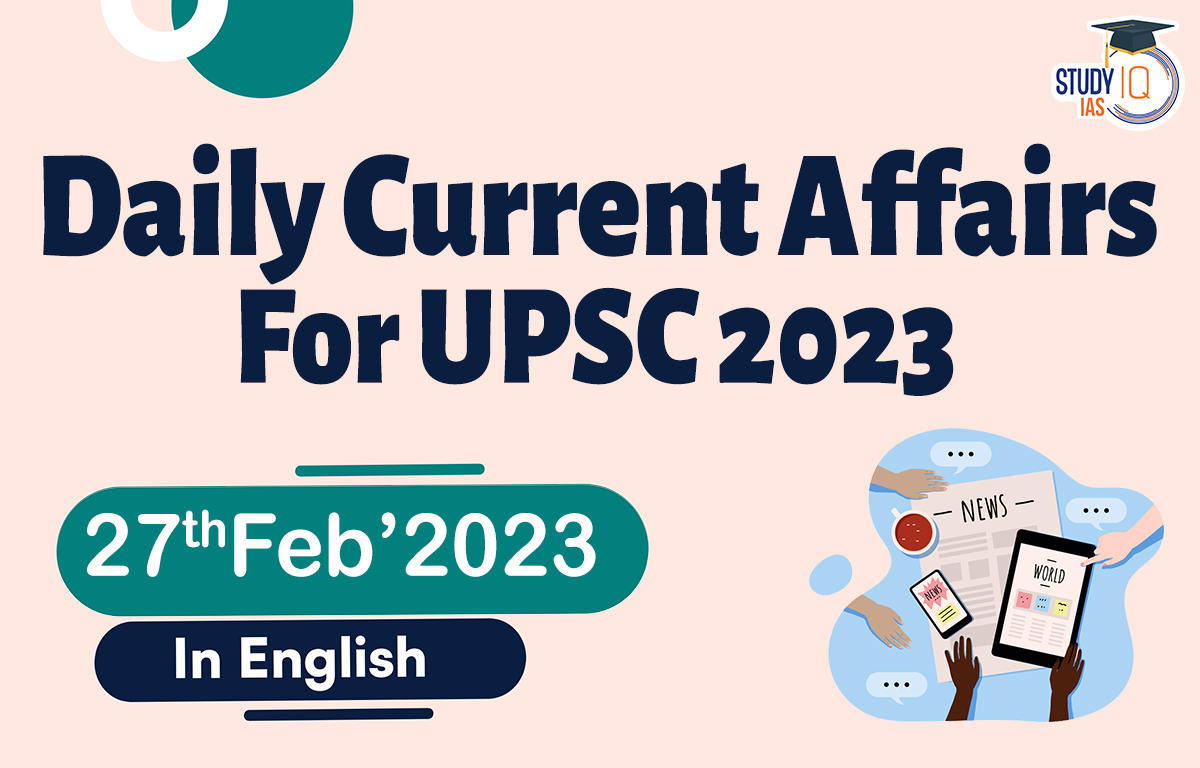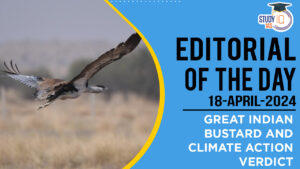Daily Current Affairs for UPSC 2023
Q) Recently seen in news, the term ‘Xylazine’ is best related to which one of the following?
- A newly discovered radioactive substance
- A sedative used in veterinary medicine that causes skin rotting
- A rare earth element used in the manufacturing of lithium batteries
- A diamond-like substance found in the Martian soil
Daily Current Affairs for UPSC – 25 February 2023
Explanation:
- Option (2) is correct: A new drug known as Xylazine or “tranq” has caused major havoc in cities across the United States by causing deadly symptoms such as skin rotting. ‘Zombie drug’ Xylazine, also known as “tranq”, is a medication that is primarily used in veterinary medicine as a sedative, analgesic, and muscle relaxant. It belongs to a class of drugs called alpha-2 adrenergic agonists and is used to help calm and immobilize animals during medical procedures or surgeries. Although xylazine is primarily used in veterinary medicine, it has also been used illicitly in humans as a recreational drug, often in combination with other substances such as opioids. When Xylazine is used in illicit way in combination with opioids, it causes symptoms such as excessive sleepiness, respiratory depression, and raw wounds, which can become severe and spread quickly. If the ulcers are not treated, they can turn into dead skin called eschar, which necessitates amputation.
Q) With reference to ‘Open Network for Digital Commerce (ONDC)’, consider the following statements:
- ONDC is an aggregator platform that makes it simple for buyers and sellers to do business.
- ONDC is incorporated as a non-profit organization under the Companies Act of 2013.
- The ONDC can be used to integrate the logistics systems of other e-commerce business companies.
Which of the statements given above are correct?
- 1 and 2 only
- 2 and 3 only
- 1 and 3 only
- 1, 2 and 3
Explanation:
- Statement 1 is incorrect but statement 2 is correct: Open Network for Digital Commerce (ONDC) is an initiative by the Department for Promotion of Industry and Internal Trade (DPIIT) to create an open-source platform that can enable a unified digital commerce ecosystem in the country. It was incorporated as a Section 8 (Non- Profit Organisation under Companies Act 2013) company in December 2021. It is neither an aggregator application nor a hosting platform, and all existing digital commerce applications and platforms can voluntarily choose to adopt and be a part of the ONDC network. The Quality Council of India and Protean e-Gov Technologies Limited are its initial promoters. It aims at promoting open networks for all aspects of exchange of goods and services over digital or electronic networks.
- Statement 3 is correct: Recently, US e-commerce giant Amazon said that it would integrate its logistics network and Smart Commerce services with government-backed Open Network for Digital Commerce (ONDC). Under ONDC, it is envisaged that a buyer registered on one participating e-commerce site (for example, Amazon) may purchase goods from a seller on another participating e-commerce site (for example, Flipkart). Implementation of ONDC, which is expected to be on the lines of Unified Payments Interface (UPI) could bring various operational aspects put in place by e-commerce platforms to the same level. The ONDC platform will support a range of logistics and supply chain management services, including real-time tracking and tracing of shipments, inventory management, and order fulfillment.
Q) Consider the following statements about Mad Cow Disease:
- It is a contagious disease that affects cattle’s central nervous system.
- It is primarily caused by the bovine rhino-tracheitis virus.
- It can be prevented by a vaccine and a medication treatment.
Which of the statements given above is/are correct?
- 1 only
- 1 and 2 only
- 2 and 3 only
- 1, 2 and 3
Explanation:
- Statement 1 is correct: Mad cow disease is also known as Bovine Spongiform Encephalopathy (BSE). It is a transmissible, slowly progressive, degenerative, and fatal disease which affects the central nervous system of adult cattle. Brazil has halted its beef exports to China after a case of mad cow disease was confirmed in its northern state of Para.
- Statement 2 is incorrect: The infectious agent that causes mad cow disease is an abnormal version of a protein normally found on cell surfaces, called a prion. When this protein gets altered, it destroys the nervous system tissue- the brain and spinal cord. A cow gets BSE by eating feed contaminated with parts that came from another cow that was sick with BSE.
- Statement 3 is incorrect: A common sign of BSE in cows is incoordination. A sick cow has trouble walking and getting up and may also act very nervous or violent. It usually takes four to six years from the time a cow is infected with the abnormal prion to when it first shows symptoms of BSE. This is called the incubation period. During this period, the disease is undetected. Once a cow starts to show symptoms, it gets sicker and sicker until it dies, usually within two weeks to six months. There is no treatment for BSE and no vaccine to prevent it.
Q) With reference to ‘Crypto assets’, consider the following statements:
- A ‘utility token’ allows businesses to raise money to fund their business model.
- The World Bank’s ‘Crypto Action Plan’ keeps track of how crypto assets affect the stability of the global monetary system.
- The ‘Crypto-Asset Reporting Framework’ is a global tax reporting framework released by the Organization for Economic Cooperation and Development.
Which of the statements given above is/are correct?
- 1 and 2 only
- 2 and 3 only
- 3 only
- 1, 2 and 3
Explanation:
- Statement 1 is incorrect: A cryptocurrency is a medium of exchange, such as the rupee or the US dollar, but is digital in format and uses encryption techniques to both control the creation of monetary units and to verify the exchange of money. It is decentralized digital money that is based on blockchain technology and secured by cryptography. A utility token uses a distributed ledger or blockchain platform to provide access rights to a specific product or service or to be used to purchase specific products or services. Security tokens allow businesses to raise money to fund an idea or business model. The business offers security tokens in exchange for fiat money or other crypto assets. The security token often comes with a stake in the project and additional benefits, such as voting rights, profit sharing or dividends.
- Statement 2 is incorrect: The International Monetary Fund (IMF) has laid out a nine-point action plan for how countries should treat crypto assets called as Crypto Action Plan. It aims to safeguard monetary sovereignty and stability by strengthening monetary policy frameworks and do not grant crypto assets official currency or legal tender status. Crypto Action Plan monitors the impact of crypto assets on the stability of the international monetary system. Strengthen global cooperation to develop digital infrastructures and alternative solutions for cross-border payments and finance. Guard against excessive capital flow volatility and maintain effectiveness of capital flow management measures.
- Statement 3 is correct: The Crypto-Asset Reporting Framework (CARF) is a global tax reporting framework for cryptocurrencies. This framework will help keep track of cross-border transactions of crypto assets. It has been released by the Organisation for Economic Cooperation and Development (OECD).
Q) Consider the following statements about ‘BorThekera’:
- It is a medicinal plant commonly found in the state of Assam.
- It is a well-known antifungal drug with the ability to protect from cardio-vascular disease.
Which of the statements given above is/are correct?
- 1 only
- 2 only
- Both 1 and 2
- Neither 1 nor 2
Explanation:
- Statement 1 and 2 are correct: A medicinal plant commonly called BorThekera in Assamese, has been found to have cardio-protective potential. Garcinia pedunculata, a medicinal plant commonly called ‘BorThekera’ in the Assamese language, traditionally forbidden for raw consumption, has been found to protect from heart diseases. The sun-dried slices of the ripe fruit are used for culinary and medicinal purposes and are known to have therapeutic properties like anti-inflammatory, anthelmintic, antibacterial, antifungal, anti-diabetic, hypolipidemic, nephroprotective, and even neuroprotective activity. The Scientists of Institute of Advanced Study in Science and Technology (IASST) explored this medicinal plant’s potential to prevent heart diseases. Administration of the dried pulp of the ripe fruit of the medicinal plant reduced cardiac hypertrophy indicators and oxidative stress and heart inflammation.


 UPSC Cadre Allocation Policy, for IAS, I...
UPSC Cadre Allocation Policy, for IAS, I...
 Lok Sabha Election 2024, Starts Form 19 ...
Lok Sabha Election 2024, Starts Form 19 ...
 Editorial of the day (18th Apr): Great I...
Editorial of the day (18th Apr): Great I...

















